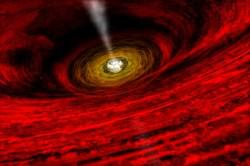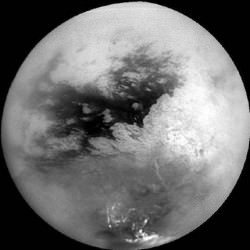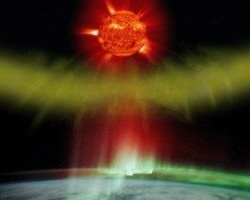You probably know we only see one side of the Moon from the Earth. But for the majority of human history, we had no idea what the far side looked like.
Billions of years ago, our Moon was formed when a Mars-sized object smashed into the Earth, spinning out a ring of debris. This debris collected into the Moon we know today. It started out rotating from our perspective, but the Earth’s gravity slowed it down until its rotation became locked with the Earth’s, keeping one half forever hidden from our view.
It wasn’t until the space age that humans finally got a chance to see what’s on the other side. The first spacecraft to image the far side of the Moon was the Soviet Luna 3 probe in 1959, which returned 18 usable images to scientists. And then in 1965, the Soviet Zond 3 transmitted another 25 pictures of higher quality that gave much more detail of the surface. The first humans to actually see the far side with their own eyes, were the crew of Apollo 8, who did a flyover in 1968.
We now have high resolution cameras imaging every square meter, even the far side. And here’s the amazing surprise….
You would think that the far side of the Moon would look like the near side, but check out the two hemispheres…They’re totally different.
The near side of the has huge regions of ancient lava flows, called maria. While the far side is almost entirely covered in crater impacts. Planetary geologists aren’t sure, but it’s possible that the Earth used to have two Moons.
Billions of years ago, the second, smaller moon crashed into the far side of the Moon, covering up the darker maria regions.
And just to clarify things with Pink Floyd’s reference to the “Dark Side of the Moon”… Except for the occasional lunar eclipse, half of the Moon is always in darkness and half is always illuminated. But that illuminated half changes as the Moon orbits around us.

Just like half of the Earth is always in darkness, and half of every other large object in the Solar System. There’s no permanent “dark side” of the Moon. The side facing towards the Sun is lit up, and the side facing away is in shadows.
There are, however, some spots on the Moon which are in eternal darkness. There are craters at the north and south poles deep enough that the light from the Sun never illuminates their floors. In these places, It’s possible that there are reserves of ice that future space colonies could use for their supplies of water, air, and even rocket fuel.
Pink Floyd was right if you’re talking radio waves instead of visible light. The far side of the Moon is naturally shielded from the Earth’s radio transmissions, so it makes an ideal spot to locate a sensitive radio observatory.
I’ll see you in the permanently shadowed craters of the Moon.







